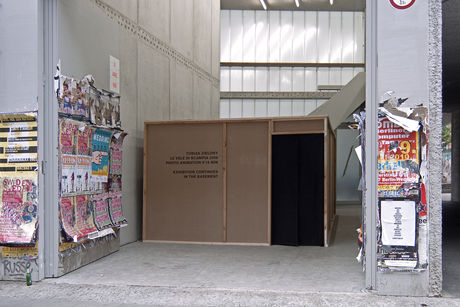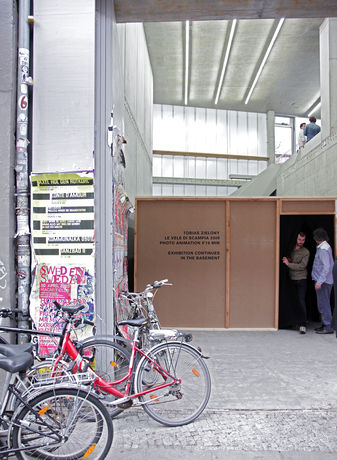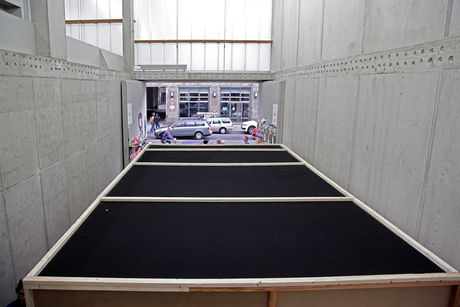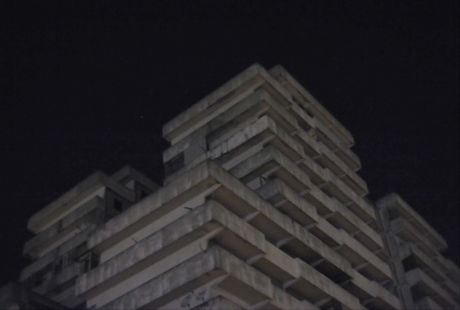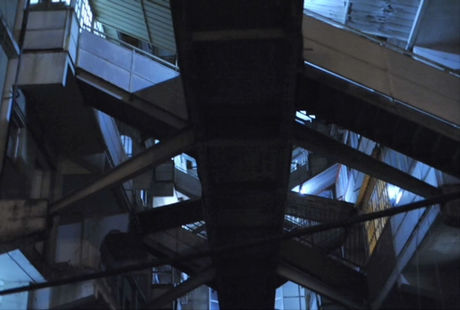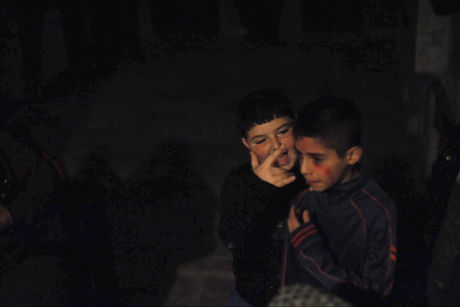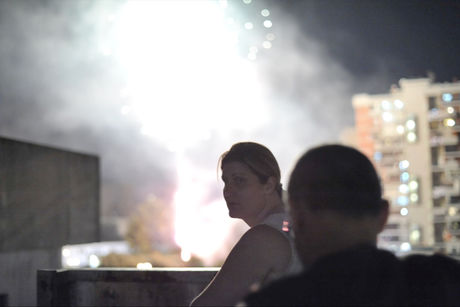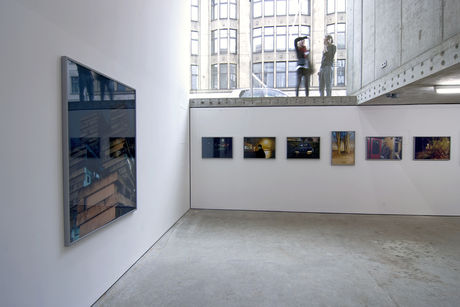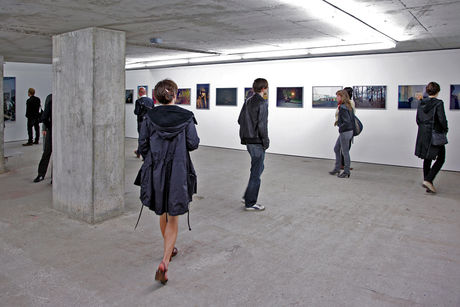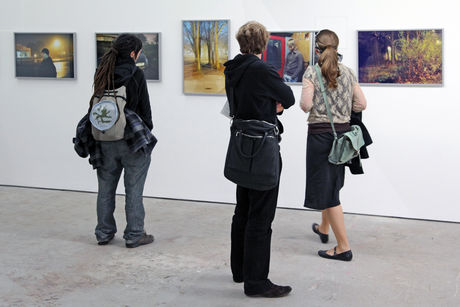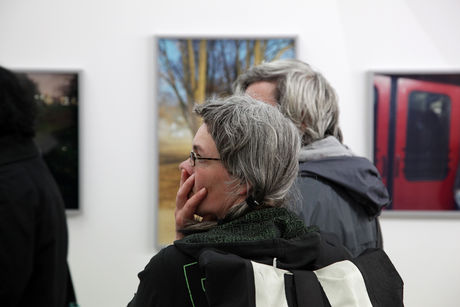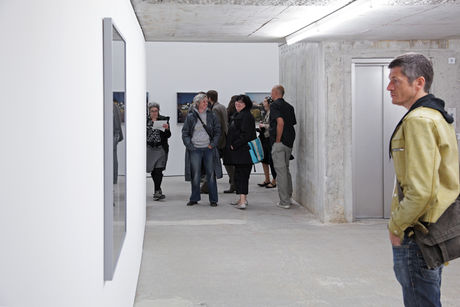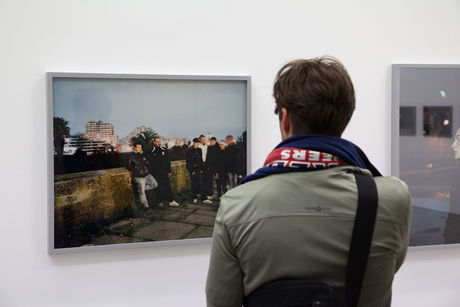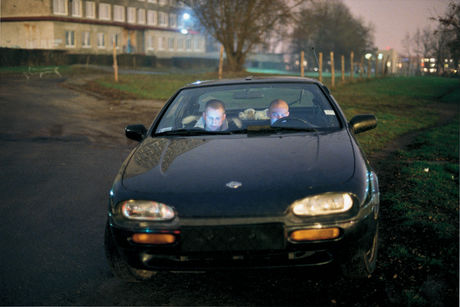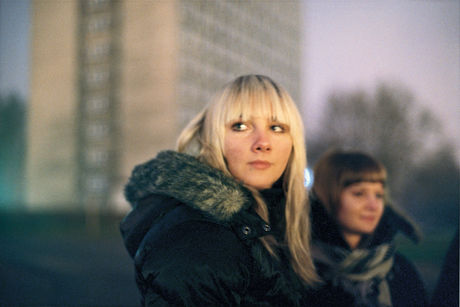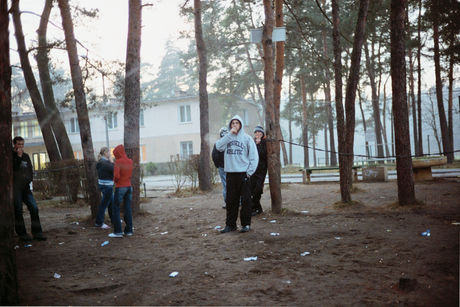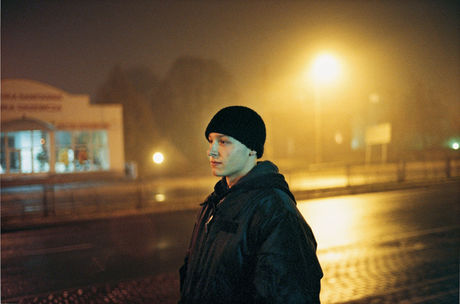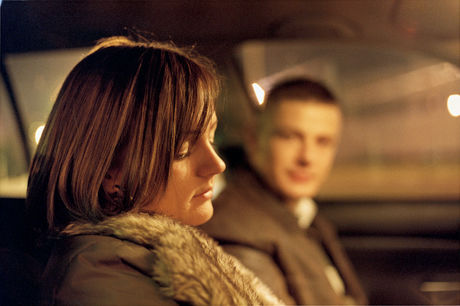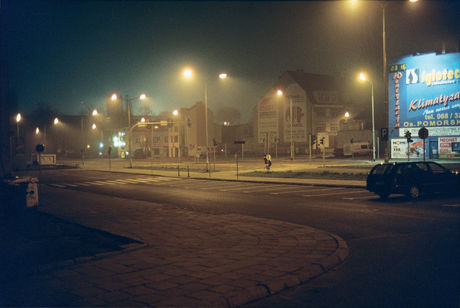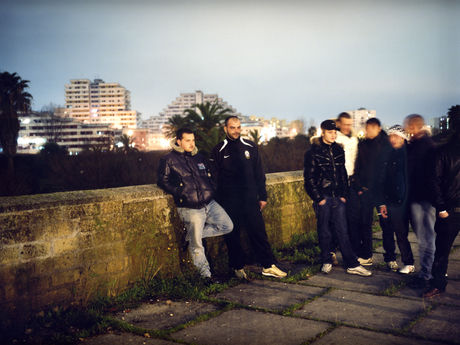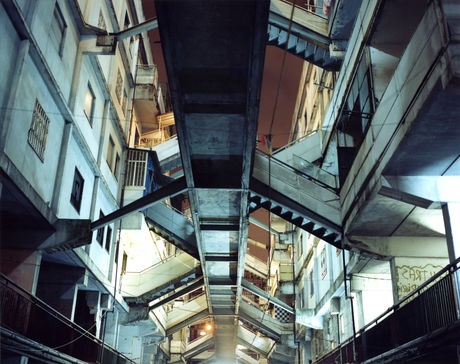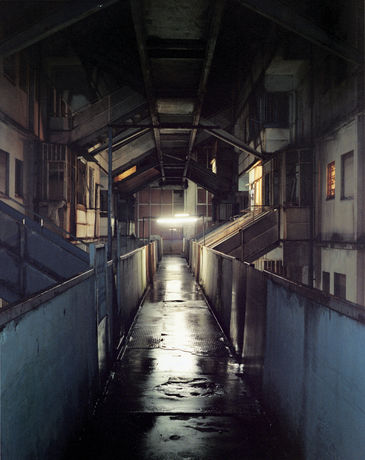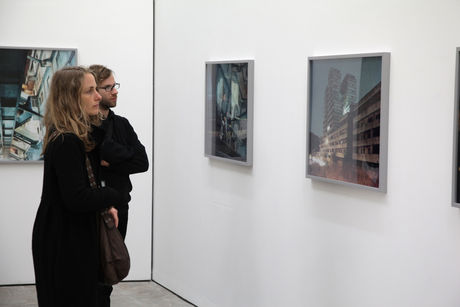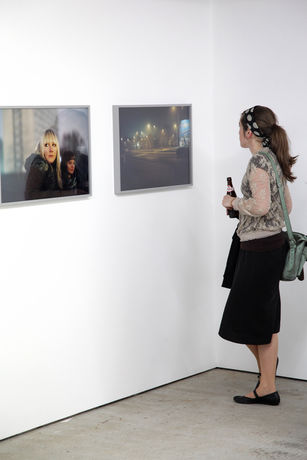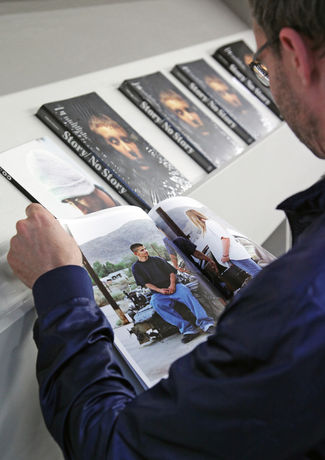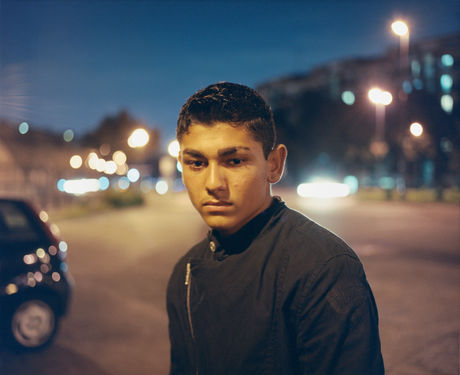Tobias Zielony
Vele, Zgora
May 1–Jun 5, 2010
May 1–Jun 5, 2010
“Le Vele di Scampia” is a futuristic housing estate in northern Naples and a Camorra battlefield. Conceived by Francesco di Salvo in the late seventies and widely recognised for their urbanistic design, “Le Vele” (“The Sails“) were squatted by mafia families even before completion. Today the building complex is a symbol of the Camorra´s power in the Naples region and a key centre of European drug trafficking. Matteo Garrone shot his movie “Gomorra” based on the Novel by Roberto Saviano on the site in 2008.
Tobias Zielony´s film “Le Vele di Scampia” from 2009 originates in this very place. Seven thousand single images, shot at night with a digital single-lens reflex camera, are used to create nine minutes of animation film. The image sequence is dissociated from real time, some scenes run faster, some slower than reality. The result is an uncomfortable rhythm. Supported by harsh cuts and by the film‘s motives, this rhythm recalls early silent movies. This adds to the mysterious, stage-like character of the architectural set on which the people Zielony meets stage their own roles in society for his camera.
The film, as well as the parallel photographic series, shows neither tough guys nor a mafia thriller, much less the notion of a Neapolitan narrative. Rather, as in preceding projects, what stands out is the substantial incertainty of the actors‘ role-play. Mostly adolescents, they live on the borders of societal acceptance: their hope, to be seen as the individuals they believe themselves to be, meets the sorrow that their representation is not convincing enough. Their clothes, gestures and accessories conform to identity templates drawn from the global stream of fashion, film and music goods. Zielony shows the juvenile waiting for the life yet to start for which they pose. On the remains of failing urban utopias they kill their time with odd jobs and boredom, time and again being criminalised.
Globalisation exisits not only in the markets and the ways of being that they offer. There is also a globalisation of the growing displeasure to subordinate one’s own life to this offer - tied to the fear that little might then remain from one’s own self. In the FAZ Peter Richter called it an “Internationale of globalization losers” that Zielony has photographed since 2000 in such different places as Halle-Neustadt, Los Angeles, Bristol, Winnipeg or Marseille as if it were a ...family? Zielony´s first gallery solo exhibition in Germany adds two further places to this series: Naples and Zielona Gora, a middle-sized Polish town near the German border. There is the same lethargy here, in urban and social non-sites coloured by an ambiguous light that captures young women and men in a transitory state between night and day.
The "Vele" project was funded by Lia Rumma, Naples
Text: Alexander Koch. Photos: mickmorley, Alexander Koch
Tobias Zielony´s film “Le Vele di Scampia” from 2009 originates in this very place. Seven thousand single images, shot at night with a digital single-lens reflex camera, are used to create nine minutes of animation film. The image sequence is dissociated from real time, some scenes run faster, some slower than reality. The result is an uncomfortable rhythm. Supported by harsh cuts and by the film‘s motives, this rhythm recalls early silent movies. This adds to the mysterious, stage-like character of the architectural set on which the people Zielony meets stage their own roles in society for his camera.
The film, as well as the parallel photographic series, shows neither tough guys nor a mafia thriller, much less the notion of a Neapolitan narrative. Rather, as in preceding projects, what stands out is the substantial incertainty of the actors‘ role-play. Mostly adolescents, they live on the borders of societal acceptance: their hope, to be seen as the individuals they believe themselves to be, meets the sorrow that their representation is not convincing enough. Their clothes, gestures and accessories conform to identity templates drawn from the global stream of fashion, film and music goods. Zielony shows the juvenile waiting for the life yet to start for which they pose. On the remains of failing urban utopias they kill their time with odd jobs and boredom, time and again being criminalised.
Globalisation exisits not only in the markets and the ways of being that they offer. There is also a globalisation of the growing displeasure to subordinate one’s own life to this offer - tied to the fear that little might then remain from one’s own self. In the FAZ Peter Richter called it an “Internationale of globalization losers” that Zielony has photographed since 2000 in such different places as Halle-Neustadt, Los Angeles, Bristol, Winnipeg or Marseille as if it were a ...family? Zielony´s first gallery solo exhibition in Germany adds two further places to this series: Naples and Zielona Gora, a middle-sized Polish town near the German border. There is the same lethargy here, in urban and social non-sites coloured by an ambiguous light that captures young women and men in a transitory state between night and day.
The "Vele" project was funded by Lia Rumma, Naples
Text: Alexander Koch. Photos: mickmorley, Alexander Koch
